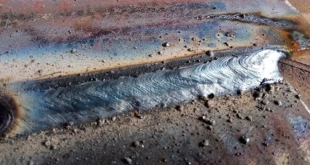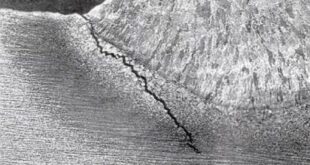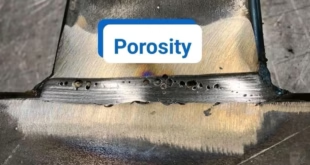Introduction
Welding stress refers to the internal forces and strains that arise within a material during the welding process. As metals undergo heating and cooling cycles during welding, they experience changes in temperature and pressure that lead to the development of stresses within the welded structure. These stresses can significantly impact the structural integrity, dimensional accuracy, and overall performance of the welded components.
Causes of Welding Stress

Thermal Stresses
Introduction to Thermal Stresses
Thermal stresses are a fundamental aspect of welding, arising from the extreme temperature differentials experienced by the materials involved. During the welding process, the intense heat applied to the base metal results in localized expansion, leading to the development of thermal stresses as the material cools. Understanding the intricacies of thermal stresses is essential for predicting and mitigating their impact on welded structures.
Explanation of Heat Affected Zone (HAZ)
The Heat Affected Zone (HAZ) is a critical region surrounding the weld where the base metal undergoes significant temperature changes without melting. This zone experiences both heating and cooling cycles, contributing to the formation of thermal stresses. The size and characteristics of the HAZ vary depending on the welding process and parameters, making it a focal point for managing welding stress.
Effects of Rapid Cooling
Rapid cooling, a consequence of the welding process, introduces unique challenges. Sudden temperature reductions can lead to uneven contraction and expansion within the material, resulting in the development of thermal stresses. This phenomenon is particularly pronounced in processes like rapid quenching or when transitioning from elevated temperatures to ambient conditions, necessitating careful consideration to prevent detrimental effects on the welded structure.
Residual Stresses
Formation during Welding Process
Residual stresses are inherent in welded joints and originate from the non-uniform cooling and solidification of the molten weld metal. As the weld cools, internal forces develop within the material, causing it to deform. Understanding the mechanisms behind the formation of residual stresses is vital for devising effective strategies to minimize their impact on the integrity of welded structures.
Factors Influencing Residual Stresses
Several factors contribute to the magnitude and distribution of residual stresses in welded joints. Welding parameters, material properties, and joint geometry play crucial roles in influencing the final state of residual stresses. Delving into these influencing factors enables engineers and welders to make informed decisions during the welding process, ultimately reducing the risk of structural issues associated with residual stresses.
Types of Residual Stresses (e.g., tensile, compressive)
Residual stresses manifest in different forms, with tensile and compressive stresses being the most prevalent. Tensile residual stresses can compromise the structural integrity of welded components, making them susceptible to cracking and fatigue failure. On the other hand, compressive residual stresses can be beneficial, enhancing resistance to external loads. A nuanced understanding of these stress types is crucial for tailoring welding procedures to achieve desired material properties and performance.
Metallurgical Changes
Phase Transformations
Metallurgical changes during welding involve alterations in the material’s microstructure, including phase transformations. The exposure to high temperatures and subsequent cooling can lead to changes in the crystalline structure of the base metal, influencing its mechanical properties. Recognizing the potential phase transformations is essential for predicting material behavior and implementing measures to mitigate adverse effects on the welded joint.
Microstructural Alterations
The welding process induces microstructural alterations, impacting the arrangement of grains and other microscopic features within the material. These alterations can affect hardness, toughness, and other mechanical properties, contributing to the overall welding stress. Analyzing microstructural changes provides insights into the material’s response to welding and guides efforts to optimize welding procedures for desired material characteristics.
Influence on Mechanical Properties
Metallurgical changes have a direct impact on the mechanical properties of the welded joint. Changes in hardness, ductility, and toughness can influence the structural performance and durability of the welded components. Understanding how metallurgical alterations influence mechanical properties enables engineers to tailor welding processes to meet specific material requirements and mitigate the risk of welding-induced failures.
Consequences of Welding Stress
Material Distortion
Deformation Types (e.g., angular distortion, bowing)
Material distortion is a direct result of welding stress and can manifest in various forms, including angular distortion and bowing. Angular distortion involves changes in the angle of the welded components, while bowing refers to the curvature or bending of the material. These distortions can adversely affect the overall shape and alignment of the welded structure, impacting its functionality and aesthetics.
Impact on Dimensional Accuracy
The impact of welding stress on dimensional accuracy is a critical consideration in industries where precise measurements are paramount. Deformations caused by welding stress can lead to deviations from the intended dimensions, compromising the fit and alignment of interconnected components. This lack of dimensional accuracy may result in difficulties during assembly and, in some cases, render the welded structure unfit for its intended purpose.
Welded Joint Integrity
Risk of Cracking
One of the most severe consequences of welding stress is the risk of cracking in the welded joint. Tensile residual stresses, often present in welded structures, can create vulnerable points susceptible to cracking. This phenomenon is particularly concerning as cracks compromise the structural integrity of the joint, posing safety hazards and potentially leading to catastrophic failure. Understanding the factors that contribute to cracking is essential for implementing preventive measures during the welding process.
Fatigue Failure
Welded joints subjected to cyclic loading, common in many applications, are at risk of fatigue failure due to welding stress. The repetitive application of stress can lead to the initiation and propagation of cracks, ultimately resulting in failure even under loads that would be well within the material’s static strength limits. Mitigating the risk of fatigue failure involves addressing the root causes of welding stress and employing fatigue-resistant design principles.
Performance and Safety Concerns
Impact on Structural Integrity
The overall structural integrity of a welded component is directly influenced by welding stress. Deformations, cracks, and alterations in material properties can compromise the ability of the structure to withstand external forces and loads. Ensuring structural integrity is paramount, especially in applications where safety is a primary concern, such as in construction, aerospace, and automotive industries. Thorough inspection and testing are essential to identify and rectify any welding-induced issues that may compromise structural integrity.
Long-term Effects on Component Performance
Welding stress can have long-term effects on the performance of welded components. Over time, the accumulated effects of residual stresses, material distortions, and altered mechanical properties can contribute to degradation and reduced functionality. Understanding the long-term implications of welding stress is crucial for predicting the service life of welded structures and implementing maintenance or repair strategies to extend their operational viability. Regular assessments and monitoring are essential to ensure the continued performance and safety of welded components throughout their lifecycle.
Techniques for Eliminating or Minimizing Welding Stress
Pre-Welding Considerations
Material Selection
Material selection is a foundational step in managing welding stress. Choosing materials with compatible thermal properties and coefficients of expansion can help minimize the potential for thermal stresses during welding. Additionally, selecting materials with a lower susceptibility to metallurgical changes, such as phase transformations, can contribute to a more controlled welding process.
Joint Design
Joint design plays a crucial role in determining the distribution of welding stress within a structure. Well-thought-out joint configurations can minimize the introduction of stress concentrations and reduce the risk of deformation or cracking. Design considerations include selecting appropriate joint types, optimizing fit-up tolerances, and incorporating features like chamfers or bevels to facilitate uniform heat distribution.
Welding Procedure Optimization
Welding procedure optimization involves fine-tuning the parameters of the welding process to minimize stress generation. This includes controlling heat input, adjusting travel speed, and employing welding techniques that promote uniform cooling. By carefully optimizing welding procedures, engineers can tailor the process to the specific requirements of the materials and joint configurations, mitigating the formation of detrimental welding stresses.
Post-Welding Interventions
Stress Relief Heat Treatment
Stress relief heat treatment is a post-welding intervention aimed at reducing residual stresses. The welded component is subjected to controlled heating and gradual cooling, allowing the material to relax and redistribute internal stresses. This process helps minimize the risk of cracking and improves the overall stability of the welded structure. Properly executed stress relief heat treatment is particularly beneficial for large and intricate weldments.
Peening Techniques
Peening techniques involve the controlled deformation of the material’s surface through methods such as shot peening or hammer peening. These techniques induce compressive stresses in the material, countering the tensile residual stresses created during welding. Peening can be applied locally to critical areas or across the entire welded structure, contributing to improved fatigue resistance and reduced susceptibility to stress-related failures.
Mechanical Methods (e.g., rolling, stretching)
Mechanical methods involve physically altering the shape of the welded structure to relieve stresses. Techniques such as rolling or stretching can be employed to induce plastic deformation, redistributing stresses and promoting improved material homogeneity. These methods are often used in conjunction with other stress-relief strategies to achieve comprehensive stress mitigation.
Advanced Welding Technologies
Laser Welding
Laser welding is an advanced welding technology that offers precise control over the heat input and minimizes the size of the heat-affected zone. By using a focused laser beam, this technique enables high-speed and low-distortion welding. Laser welding is particularly advantageous for applications where reducing welding stress is critical, such as in aerospace and microelectronics.
Electron Beam Welding
Electron beam welding utilizes a focused beam of high-velocity electrons to generate heat for welding. This technology allows for deep penetration and rapid cooling, resulting in reduced thermal stresses. Electron beam welding is well-suited for applications requiring high precision and minimal distortion, making it a preferred choice in industries such as medical device manufacturing and aerospace.
Friction Stir Welding
Friction stir welding is a solid-state welding process that involves the rotation and translation of a non-consumable tool along the weld joint. This method produces lower heat input compared to traditional welding techniques, minimizing thermal stresses and reducing the likelihood of metallurgical changes. Friction stir welding is particularly effective for joining materials that are challenging to weld conventionally, such as certain aluminum alloys.
Case Studies
Real-world Examples of Welding Stress Issues
Real-world examples of welding stress issues highlight the challenges faced by industries and provide valuable insights into the consequences of inadequate stress management. Some common scenarios include:
- Bridge Construction:
- Issue: Welding-induced stress leading to distortion and misalignment in structural elements.
- Consequence: Compromised load-bearing capacity and safety concerns.
- Pressure Vessel Manufacturing:
- Issue: Residual stresses contributing to cracking in welded joints.
- Consequence: Reduced structural integrity and increased vulnerability to leakage.
- Aerospace Components:
- Issue: Thermal stresses causing deformation and dimensional inaccuracies.
- Consequence: Impact on aerodynamics and overall aircraft performance.
Analysis of Solutions Implemented
In response to these real-world challenges, various solutions have been implemented to mitigate welding stress issues. Analyzing these solutions provides valuable insights into effective stress management strategies:
- Pre-Welding Considerations:
- Solution: Thorough material selection based on compatibility and minimizing differences in coefficients of expansion.
- Outcome: Reduction in thermal stresses during welding.
- Joint Design Optimization:
- Solution: Implementation of joint designs that distribute stress more evenly.
- Outcome: Improved structural stability and reduced risk of deformation.
- Advanced Welding Technologies:
- Solution: Adoption of advanced welding techniques, such as laser welding or friction stir welding.
- Outcome: Reduced heat-affected zones, minimized distortion, and enhanced precision.
- Stress Relief Heat Treatment:
- Solution: Systematic application of stress relief heat treatment post-welding.
- Outcome: Alleviation of residual stresses, promoting better material relaxation.
- Mechanical Interventions:
- Solution: Utilization of peening techniques to induce compressive stresses.
- Outcome: Enhanced fatigue resistance and reduced susceptibility to cracking.
Lessons Learned and Best Practices
Drawing lessons from these case studies, several best practices and lessons learned emerge:
- Holistic Approach:
- Lesson Learned: Addressing welding stress requires a comprehensive, holistic approach encompassing material selection, joint design, and welding techniques.
- Best Practice: Conduct a thorough pre-welding assessment, considering all aspects of the welding process and potential stress contributors.
- Continuous Monitoring:
- Lesson Learned: Regular inspection and monitoring of welded structures are essential for detecting stress-related issues early.
- Best Practice: Implement a proactive maintenance and inspection schedule to identify and address stress-related concerns promptly.
- Technology Adoption:
- Lesson Learned: Embracing advanced welding technologies can significantly reduce welding stress.
- Best Practice: Stay abreast of technological advancements and consider their application based on the specific requirements of the project.
- Knowledge Sharing:
- Lesson Learned: Sharing experiences and lessons learned from case studies promotes industry-wide awareness and knowledge.
- Best Practice: Establish forums for knowledge exchange and collaboration among professionals in the welding and fabrication industries.
Future Trends and Innovations
Emerging Technologies in Welding
Additive Manufacturing (AM) Integration:
- Trend: The integration of additive manufacturing techniques with traditional welding processes is gaining traction.
- Impact: AM allows for the creation of complex geometries and the layer-wise deposition of materials, offering new possibilities for precision welding and stress management.
Machine Learning and Artificial Intelligence:
- Trend: The incorporation of machine learning algorithms and artificial intelligence in welding systems for real-time monitoring and adaptive control.
- Impact: Enhanced process control, reduced defects, and optimized welding parameters, leading to improved stress management.
Nanotechnology in Welding Materials:
- Trend: Utilization of nanomaterials for welding applications, offering improved strength, thermal conductivity, and reduced susceptibility to stress.
- Impact: Nanotechnology-enhanced welding materials could contribute to more resilient welded structures with minimized stress-related issues.
Research and Development Efforts
Digital Twin Technology:
- Focus: Developing digital twin models for simulating and analyzing welding processes.
- Objective: Real-time virtual simulations can aid in predicting stress points, optimizing welding parameters, and refining stress management strategies.
Smart Welding Consumables:
- Focus: Research on smart welding consumables with embedded sensors.
- Objective: Continuous monitoring of weld quality and stress levels during the welding process, providing valuable data for real-time adjustments and quality assurance.
Materials Innovation:
- Focus: Research into novel materials with inherent stress-resistant properties.
- Objective: Identification and development of materials that exhibit reduced susceptibility to welding stress, contributing to more robust welded joints.
Potential Advancements in Stress Management Techniques
Precision Stress Relief Methods:
- Potential Advancement: Development of localized, precision stress relief methods.
- Impact: Targeted stress relief techniques could be applied to specific areas of a welded structure, minimizing the need for extensive heat treatment and reducing the risk of material distortion.
Adaptive Welding Processes:
- Potential Advancement: Implementation of adaptive welding processes that respond to real-time stress feedback.
- Impact: Adaptive control systems could dynamically adjust welding parameters based on monitored stress levels, optimizing the process for reduced stress generation.
Multi-Material Welding Techniques:
- Potential Advancement: Advancements in welding techniques for joining dissimilar materials.
- Impact: The ability to seamlessly join materials with disparate thermal properties could reduce welding stress by allowing for better compatibility between joined components.
FAQs
How does welding stress affect the lifespan of welded structures?
Welding stress, if not managed, can significantly reduce the lifespan of welded structures by compromising their structural integrity and increasing the risk of fatigue failure.
Can all welding stress be completely eliminated?
While complete elimination may be challenging, effective management techniques can substantially reduce welding stress, ensuring the longevity and reliability of welded components.
Why is preheating important in welding stress management?
Preheating helps control the cooling rate of the material, reducing the risk of residual stresses and enhancing the overall effectiveness of welding stress management.
How do advancements in welding technology contribute to stress management?
Innovations in welding technology, such as automated stress monitoring systems, contribute to real-time stress management, improving the quality and durability of welded structures.
What role do industry standards play in welding stress prevention?
Adhering to industry standards is crucial for stress-free welding. These standards provide guidelines and best practices to minimize welding stress and ensure high-quality welds.
Conclusion
The future of welding stress management holds exciting possibilities with the integration of emerging technologies, innovative research, and advancements in stress management techniques. As industries embrace these trends, the potential for safer, more efficient, and technologically advanced welding processes is on the horizon. Continuous collaboration between researchers, engineers, and industry professionals will be key to realizing these advancements and ensuring the continued improvement of welding practices.
 Welding of Welders All about Welding and Welders
Welding of Welders All about Welding and Welders



